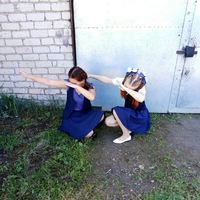
Fe(No3)3=......... Ag+HNO3(конц)=...... Sn+HNO3(конц)=....... Ca+HNO3(не помню...конц или
разб,оба,пожалуйста)=..... Mg + H2SO4(и с конц и с разб,пожалуйста) Также к каждому уравнению нужны окислительно-восстановительные реакции. Благодарю! 0
0
 0
0
Ответы на вопрос
 Внимание! Ответы на вопросы дают живые люди. Они могут содержать ошибочную информацию, заблуждения, а также ответы могут быть сгенерированы нейросетями. Будьте внимательны. Если вы уверены, что ответ неверный, нажмите кнопку "Пожаловаться" под ответом.
Внимание! Ответы на вопросы дают живые люди. Они могут содержать ошибочную информацию, заблуждения, а также ответы могут быть сгенерированы нейросетями. Будьте внимательны. Если вы уверены, что ответ неверный, нажмите кнопку "Пожаловаться" под ответом.

N(+5)+1e->N(+4) 1 4
2O(-2)-4e->O2 4 1
Ag+2HNO3->AgNO3+NO2+H2O
Ag(0)-1e->Ag(+1)
N(+5)+1e->N(+4)
Ca+4HNO3->Ca(NO3)2+2NO2+2H2O
Ca(0)-2e->Ca(+2) 2 1
N(+5)+1e->N(+4) 1 2
3Ca+8HNO3->3Ca(NO3)2+2NO+4H2O - возможны другие варианты реакции.
Ca(0)-2e->Ca(+2) 2 3
N(+5)+3e->N(+2) 3 2
Sn+4HNO3->Sn(NO3)2+2NO2+H2O
Sn+8HNO3->3Sn(NO3)2+2NO+4H2O
Mg+H2SO4->MgSO4+H2
4Mg+5H2SO4->4MgSO4+H2S+4H2O
Mg(0)-2e->Mg(+2) 2 4
S(+6)+8e->S(-2) 8 1
 0
0
 0
0

Chemical Reactions and Oxidation-Reduction Reactions
Fe(NO3)3: The chemical equation for the reaction of Fe(NO3)3 can be represented as: ``` 2Fe(NO3)3 + 3H2O → Fe2O3 + 6HNO3 + 3O2 ``` The oxidation-reduction reaction for this process involves the transfer of electrons from iron to oxygen, leading to the formation of iron oxide and the release of oxygen gas.
Ag + HNO3 (concentrated): The chemical equation for the reaction of Ag with concentrated HNO3 is: ``` 3Ag + 4HNO3 → 3AgNO3 + 2H2O + 2NO + NO2 ``` In this reaction, silver (Ag) reacts with concentrated nitric acid (HNO3) to form silver nitrate (AgNO3), water (H2O), nitrogen monoxide (NO), and nitrogen dioxide (NO2). This is an example of a redox reaction, where silver undergoes oxidation and nitric acid undergoes reduction.
Sn + HNO3 (concentrated): The chemical equation for the reaction of tin (Sn) with concentrated nitric acid is: ``` 4Sn + 10HNO3 → 4Sn(NO3)2 + 4H2O + 5NO2 + 2H2O ``` In this reaction, tin reacts with concentrated nitric acid to form tin(II) nitrate, water, nitrogen dioxide, and water. This is also an example of a redox reaction, involving the transfer of electrons between tin and nitrogen in the nitric acid.
Ca + HNO3 (concentrated or dilute): When calcium (Ca) reacts with nitric acid (HNO3), the chemical equation is: ``` Ca + 4HNO3 → Ca(NO3)2 + 2NO2 + 2H2O ``` In this reaction, calcium reacts with nitric acid to form calcium nitrate, nitrogen dioxide, and water. This is a redox reaction, with calcium undergoing oxidation and nitric acid undergoing reduction.
Mg + H2SO4 (concentrated and dilute): The chemical equations for the reaction of magnesium (Mg) with sulfuric acid (H2SO4) in both concentrated and dilute forms are as follows: - Concentrated H2SO4: ``` Mg + H2SO4 → MgSO4 + H2 ``` - Dilute H2SO4: ``` Mg + H2SO4 → MgSO4 + H2 + SO2 ``` In both cases, magnesium reacts with sulfuric acid to form magnesium sulfate, hydrogen gas, and in the case of dilute sulfuric acid, sulfur dioxide is also produced. These reactions involve the transfer of electrons, constituting oxidation-reduction reactions.
I hope this helps! If you have any more questions or need further assistance, feel free to ask.
 0
0
 0
0
Топ вопросов за вчера в категории Химия
Последние заданные вопросы в категории Химия
-
Математика
-
Литература
-
Алгебра
-
Русский язык
-
Геометрия
-
Английский язык
-
Химия
-
Физика
-
Биология
-
Другие предметы
-
История
-
Обществознание
-
Окружающий мир
-
География
-
Українська мова
-
Информатика
-
Українська література
-
Қазақ тiлi
-
Экономика
-
Музыка
-
Право
-
Беларуская мова
-
Французский язык
-
Немецкий язык
-
МХК
-
ОБЖ
-
Психология
-
Физкультура и спорт
-
Астрономия
-
Кыргыз тили
-
Оʻzbek tili




















